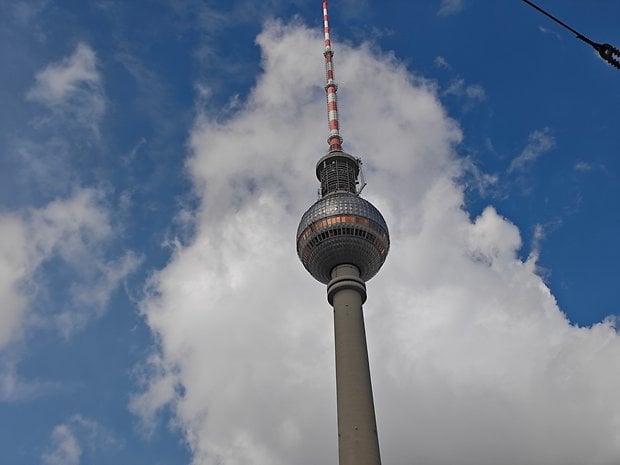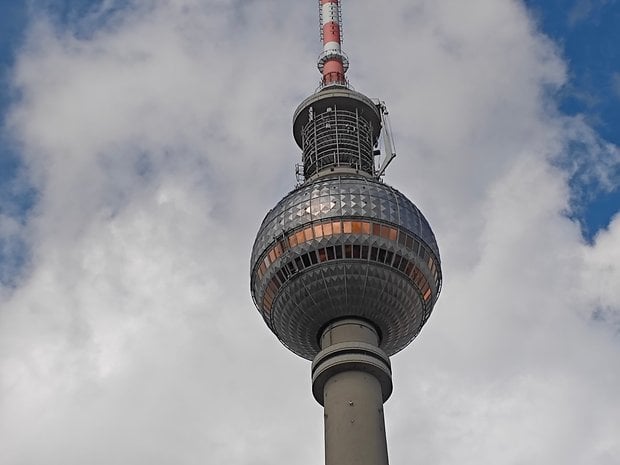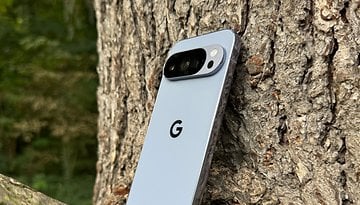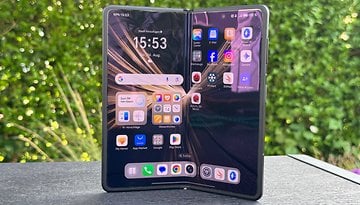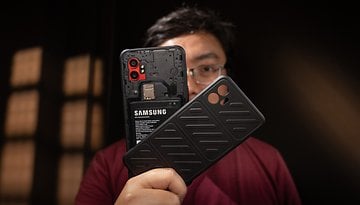Poco F6 Pro Review: Closer but Not Quite a True Flagship


Poco once again launched a premium phone with a recipe perfected to please its hardcore fans: The Poco F6 Pro comes with last year’s flagship processor, plenty of memory, excellent display and battery, at under $600/600€. But as usual, there are some compromises, and you can find more about that on nextpit’s review.
Good
- Fast performance and plenty of RAM
- Bright 1440p OLED screen
- Good main camera
- Fast charging
Bad
- No wireless charging
- No water/dust resistance rating
- Unnecessary 2MP macro camera
- Bloatware

Poco F6 Pro in a nutshell
Having tested the F5 generation and awarding both models with a 9/10 score, we came to the F6 generation eager to find where Poco improved this time and which points had some sacrifices. The phone was announced on May 23rd, 2024, and is based on the popular Redmi K70 exclusive to the Chinese market.
Poco kept its price positioning for 2024 at the same time it gave it an upgrade to the base model RAM, while offering bigger memory options. The Poco F6 Pro is powered by the same Snapdragon 8 Gen 2 found in almost all flagship phones from 2023.

While the screen keeps the same size, resolution, and refresh rate, Poco used a more modern panel capable of higher brightness levels in both typical and peak levels. And the camera setup had a similar evolution: While it keeps the triple-camera kit, the main camera was upgraded to a bigger sensor, with better light-capturing capabilities.
The battery department will probably be the most controversial among fans. While the wired charging is faster than ever for a Poco F phone, the Poco F6 Pro does not support wireless charging, one of the Pros Casi listed in this Poco F5 Pro review in 2023.
The Poco F6 Pro is already on sale, with suggested prices starting at 579.90€ (approx. $630) for the 12+256 GB option, and 629.90€ (approx. $685) for the 12+512 GB model, with pre-order prices cutting 80€ of the MSRP. Some markets will also get a 16+1024 GB model. As other Poco phones, the F6 Pro won’t be officially available in the US, but third-party sellers may offer the phone on online marketplaces.
Design and Display
The front of the Poco F6 Pro is dominated by the big 6.67’’ OLED screen, with the same 1440p resolution and 120 Hz refresh rate as the previous model. New for 2024 is the improved brightness, and the slightly smaller bezels, thanks to a small reduction in the dimensions. On the back we find a nice glass surface that feels soft to the touch and doesn’t get fingerprints.
Pros:
- Premium looking and thin build.
- Thin bezels.
- No fingerprints on the textured glass back.
- Bright, high-resolution display.
Cons:
- No IP rating for water or dust resistance.
- No storage expansion or headphone jack.
After appreciating the design of the Poco F6, the totally different F6 Pro also looked pleasing to the eyes. The back design, however, can be a bit more divisive, as we don’t expect everyone to like the frosted, finish on the glass back. We liked it, and for those who don’t, Poco included a protective case to cover it.

The back also features a raised island for the camera module. The transparent block does not have the same height as the camera lenses, so the phone still rocks uneven on flat surfaces. The block gives the phone a more premium look, steering away from the gamer aesthetic of previous Poco phones.
Around the sides, the Poco F6 Pro has the volume rocker and power button on the right, IR blaster and microphone on the top, an empty left side, and the bottom houses the dual SIM tray, USB-C port, and speaker grille. The Poco F6 Pro does not have a headphone jack or microSD card support.

Like so many other 2024 phones, the Poco F6 Pro got a big jump in peak brightness, which can reach up to 4,000 nits according to the manufacturer. We could not test this claim, but the phone was perfectly usable in broad daylight. Other than brightness, the display scores points for the typical punchy colors from the OLED panel, with high contrast, and the nice 3200x1440 resolution.
Despite the premium build, and nice design of the reviewed unit, Poco does not rate the F6 Pro for water or dust resistance, which is a disappointment for a high-end device in 2024.
Xiaomi Poco F6 Pro software
HyperOS comes installed on the Poco F6 Pro, and the overall experience will feel familiar for MIUI users. Poco promises 3 Android upgrades and four years of security updates, while we feel that is a good enough level of support, rival flagship phones are promising much longer update coverage.
Pros:
- Improved software update policy.
Cons:
- Lots of bloatware.
You can check Antoine’s review of HyperOS for more details, and since then, Xiaomi’s endgame for the operating system has become a bit more clear, with other ecosystem devices reaching the market. We could not test the brand’s car (in partnership with BAIC), but the company demonstrated some nice integration features between the phone and the recently released Poco Pad.
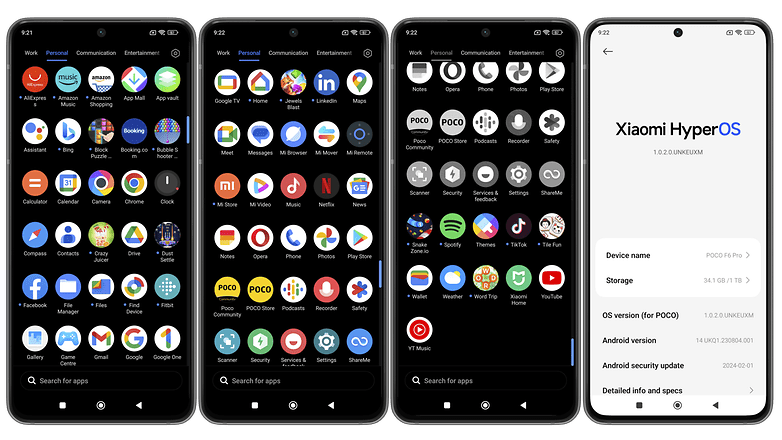
Poco also promised some AI-powered features, under the AIGC branding. We saw a few of those like magic eraser and image expansion demonstrated on a beta version, which Poco will first release to community members before making them publicly available.
One of main downsides of the Poco F6 Pro is the usual amount of bloatware. We counted 19 third-party apps after an updated clean install for a total of 34.1 GB of used storage.
Performance and Software
Powered by the Snapdragon 8 Gen 2 and fast RAM and storage systems, the Poco F6 Pro performs pretty much like any Android flagship from 2023. And maybe with the exception of games, most users won’t be able to find differences to any 2024 flagship.
Pros:
- Flagship performance.
Cons:
- Can get hot while gaming.
- No eSIM support.
Compared to the Poco F6’s Snapdragon 8s Gen 3, the 8 Gen 2 used on the F6 Pro is older, with older generation CPU cores at a higher clock speed, but roughly the same Adreno GPU also at higher clocks.
| Poco F6 Pro (Snapdragon 8 Gen 2) |
Poco F6 (Snapdragon 8s Gen 3) |
Google Pixel 8a (Tensor G3) |
Xiaomi 14 Ultra (Snapdragon 8 Gen 3) |
OnePlus 12R (Snapdragon 8 Gen 2) |
Galaxy S23 FE (Exynos 2200) |
Nothing Phone (2) (Snapdragon 8+ Gen 1) |
|
|---|---|---|---|---|---|---|---|
| AnTuTu | 1,563,987 | 1,455,312 | 1,153,512 | 1,939,484 | 1,307,367 | n/a | 1,154,515 |
| 3DMark Wild Life Extreme Stress Test |
n/a | Best loop: 3140 Worst loop: 2584 Stability: 82.3% |
Best loop: 2437 Worst loop: 1667 Stability: 68.5% |
Best loop: 4708 Worst loop: 3606 Stability: 76.6% |
Best loop: 3660 Worst loop: 2462 Stability: 67.3% |
Best loop: 2370 Worst loop: 1809 Stability: 76.3% |
Best loop: 2793 Worst loop: 1687 Stability: 60.4% |
| Geekbench 6 | Single: 1442 Multi: 5318 |
Single: 1953 Multi: 4930 |
Single: 1688 Multi: 4362 |
Single: 1828 Multi: 6317 |
Single: 1561 Multi: 5142 |
Single: 1614 Multi: 4073 |
Single: 1712 Multi: 4521 |
In daily tasks both phones are indistinguishable—and the same can be said for most recent flagship phones. App loading times are as good as the best Android phones released this year, and switching between opened apps is snappy.
In the gaming department, Poco’s choice of the Snapdragon 8 Gen 2 makes the Poco F6 Pro ready for any game on the Google Play Store, with support even for features that are yet to be properly used such as ray tracing (RT).
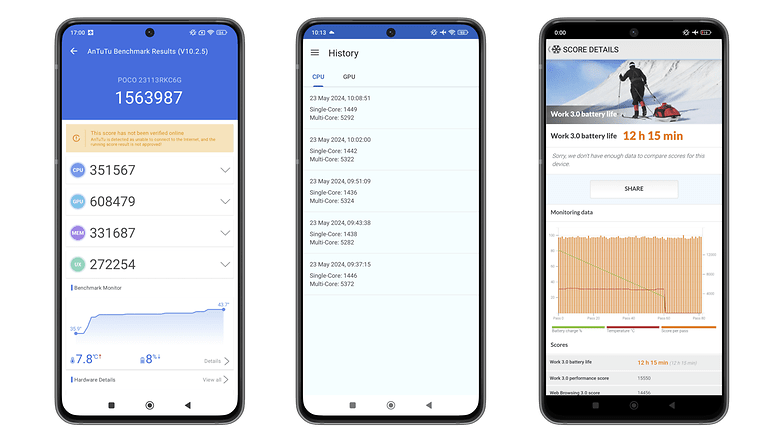
We could not test the Poco F6 Pro with the usual 3D Mark benchmark suite, but performance should be similar to most flagship phones from 2023 and also its cheaper sibling, the Poco F6.
During heavy tasks, however, we noticed the phone did get warm to the touch, despite Poco’s claims of software optimization (WildBoost 3.0), and heat dissipation (LiquidCool 4.0). In games, that usually translates into lower performance in longer gaming sessions.
Camera
The Poco F6 Pro comes with a 50-megapixel main camera, accompanied by an 8 MP ultra-wide lens, and the inevitable 2-megapixel macro camera. Despite the lower resolution on the main camera, Poco used a bigger sensor, which resulted in noticeably better pictures.
Pros:
- Excellent pictures from the main camera.
- Beauty filter off by default on selfies.
- Decent shots from the ultra-wide camera.
Cons:
- Useless 2 MP macro camera.
- No telephoto lens.
The camera section is probably the biggest change in comparison to the vanilla Poco F6. The Poco F6 Pro features a bigger sensor, capable of better capturing light, and the results were visible not only on the image files but also on the camera app preview.

Pictures from the main camera had good levels of detail, appropriate colors, and sharpness both in daylight and night shots. Even 2x magnification using digital zoom returned usable pictures. The camera app offers up to 10x digital zoom, but at that point, pictures tend to become mushy and blurry.
Ultra-wide shots were also good, both in daylight and night, but colors tended to be slightly washed out, and the low-resolution sensor sacrifices a bit of detail when compared to the main camera.
Macros, on the other hand, are the typical noisy images from the 2-megapixel sensor. The mode is once again treated like a second-class option, not being listed on the camera app mode selection but hidden in the app settings.
You are better off using the main camera and cropping the image, even if the focus distance isn’t as close as the macro. If Poco really needed to have a third camera on the Poco F6 Pro, they should have gone with a proper lens, preferably a telephoto one to challenge the true flagships.
And finally, the selfie camera does it job well, even in low(ish)-light scenarios. Better yet, the Poco F6 Pro came with the beauty filter off, presenting realistic skin tones. The camera app obviously offers smoothing effects, but your mileage may vary.
Battery
Powered by a 5000 mAh battery, the Poco F6 Pro takes one step forward and one step back compared to its predecessors. It features truly fast 120 W wired charging but lost the wireless charging available on the F5 Pro.
Pros:
- Fast charging.
- Charger included.
- Good battery life.
Cons:
- No wireless charging.
While we found the charging upgrade on the Poco F6 didn’t improve charging times, the F6 Pro really showed a big improvement with the upgrade from 67 W to 120 W charging. Total charging times were cut in half—to 25 minutes—, and 10 minutes on the wall using the included adapter reached 51% capacity.
| Charging | Poco F6 Pro 5000 mAh | 120 W |
Poco F5 Pro 5160 mAh | 67 W |
OnePlus 12R 5500 mAh | 100 W |
Poco F6 5000 mAh | 90 W |
Google Pixel 8a 4492 mAh | 18 W |
Galaxy S23 FE 4500 mAh | 25 W |
|---|---|---|---|---|---|---|
| 5 minutes |
|
|
|
|
|
|
| 10 minutes |
|
|
|
|
|
|
| 20 minutes |
|
|
|
|
|
|
| 30 minutes |
|
|
|
|
||
| 1 hour |
|
|
|
|||
| Full charge |
|
|
|
|
|
|
| PC Mark Battery test |
|
|
|
|
|
|
What Poco giveth, Poco taketh. While wired charging had a noticeable upgrade, the Poco F6 Pro is not compatible with wireless charging—a feature available on the F5 Pro. Qi-charging is not universally found in this price range, but removing it after one generation is a downgrade nonetheless.
Battery life in general was good, with more than enough capacity for a day of use. More frugal users can probably take the Poco F6 Pro through almost two days of runtime using the energy-saving modes.
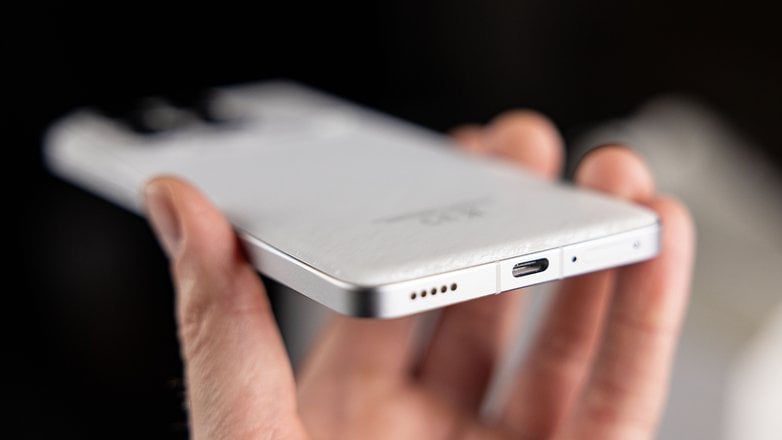
In the PC Mark battery life test, the 12h15 runtime between 80% and 20% charge during a simulated workload may not seem much, but the phone had a consistently higher performance score during the test.
Whenever you are away from a power source and the battery reaches around 2%, HyperOS activates a low-power “Hibernation” mode, with access to SMS and phone calls, that can help users in emergency situations, but cuts access to apps.
Key Features
| Poco F6 Pro | |
|---|---|
| Display |
|
| SoC |
|
| Memory |
|
| OS |
|
| Camera |
|
| Selfie Camera |
|
| Battery |
|
| Connectivity |
|
| IP Certification |
|
| Dimensions and weight |
|
| Other points that may interest the nextpit community:
|
|
Conclusion
At its early-bird price of 500€ (approx. $550), the Poco F6 Pro is one of the best options for those looking for top-notch performance for the money. But the global market for the segment is a bit more competitive in 2024, with the OnePlus 12R, Galaxy S23 FE, and Pixel 8a offering compelling arguments for shoppers.
For this season’s duel, Poco brought noticeable improvements in display, design, camera, software support, and charging. While some aspects like secondary cameras and even performance didn’t see big upgrades, there were a few notable downgrades from the previous F5 Pro, most notably wireless charging and dust and water resistance.
Unlike last year, we find it a bit harder to recommend the Poco F6 Pro. Not that the phone isn’t good, which it is. But if you don’t care about camera quality the Poco F6 offers a similar performance, and if you truly care about it, the Pixel 8a or even the Galaxy S23 FE deliver a more compelling experience and/or image quality.
In the end, Poco is still limited to using one of the phone blueprints Xiaomi has to offer. It prices the F6 Pro aggressively, but not even that or the welcomed upgrades can justify some of the downgrades Poco had to make. And with the higher expectations in the $500-$600 segment, the F6 Pro doesn’t seem to offer the same bang for the buck as its predecessor.








